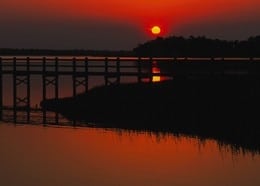Outer Banks What Is Known For
FISHING
Sure, you can hop a boat and head offshore to the Gulf Stream for a chance at a marlin in summer, but the essence of the Outer Banks fishing is standing on a miles-long stretch of sand, casting out beyond the surf for red drum (Cape Point, where you can drive on the beach, is a time-honored hotspot) and bluefish. Peak season is usually late fall, from October to Thanksgiving.
NATURE
Don't forget the bird books and binoculars. Fall and winter are the best times to tour the nature trails and observation towers at Pea Island National Wildlife Refuge on northern Hatteras. It's a pit stop for migrating waterfowl on the Atlantic Flyway, with more than 250 species (snow geese, ducks, herons, and shore birds are regulars) recorded here. For another side of the 5,915-acre refuge, take a kayak or canoe journey through the calm salt marshes and backwaters.
SIGHTSEEING
Lighthouse lovers have a field day here. At present, visitors can climb only the Currituck Beach Lighthouse (1875). But the famed black-and-white spiraled tower of the famed Cape Hatteras Lighthouse in Buxton (1870) is expected to reopen to tours after repairs. However, there is a visitors' center in the restored keeper's quarters at the Bodie Island Lighthouse (1872), and the state's oldest lighthouse, the whitewashed tower at Ocracoke (1823) is closed, but is still a favorite.
